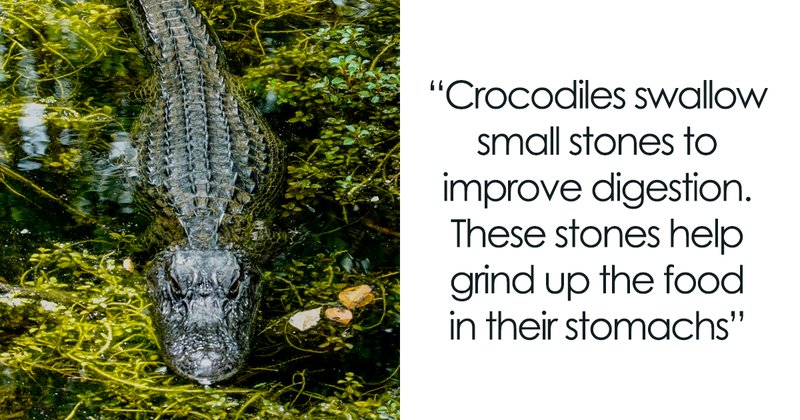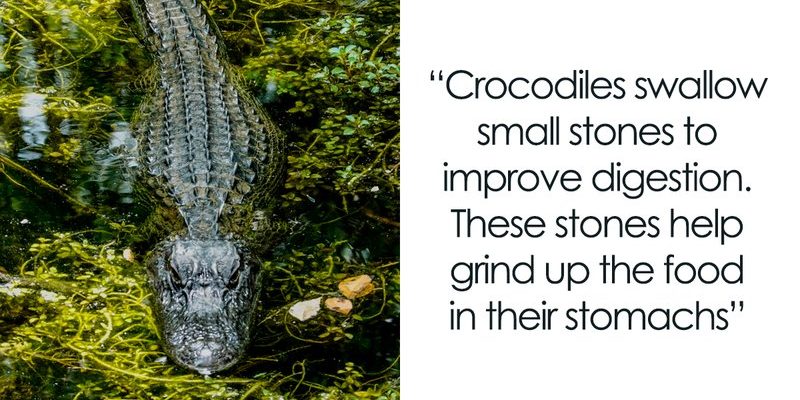
So, why are crocodiles so captivating? Well, it’s not just their looks. Crocodiles have a rich history, unique behaviors, and surprising traits that make them stand out in the animal kingdom. Whether you find them swimming gracefully in the water or basking under the sun, there’s so much more beneath the surface. Let’s dive into the top ten facts about these incredible creatures.
Crocodiles Are Living Fossils
When we say that crocodiles are “living fossils,” we mean it literally. They’ve been around for about 200 million years, so longer than dinosaurs! Imagine a time when these reptiles were roaming the Earth alongside giant ferns and other prehistoric creatures. Their basic body structure has changed very little over the millennia, showcasing their effective design for survival.
The relatives of modern crocodiles once included larger species, some even bigger than a bus! Today’s crocodiles maintain a body shape and hunting method that have kept them alive throughout eras of dramatic change. This longevity and adaptability make them a crucial part of understanding our planet’s evolutionary history.
They Have Powerful Jaws
Crocodiles are known for their incredibly strong jaws. The force of a crocodile’s bite can exceed 3,700 pounds per square inch—that’s more than any other creature on land! To put that in perspective, that’s enough force to crush bones easily.
But here’s the thing: it’s not just about the strength. They also have a unique lockjaw mechanism, which makes it almost impossible for their jaws to be opened once they close. This means, once they catch their prey, they hold on firmly until it’s time to feast. It’s a powerful combination of strength and strategy that makes them such effective hunters.
Crocodiles Are Excellent Swimmers
Crocodiles are built for the water; they can swim up to 20 miles per hour in short bursts! Imagine gliding through the water with ease, using their powerful tails and webbed feet to navigate swiftly. What’s remarkable is that they can hold their breath for over an hour underwater. This ability helps them hunt or escape from threats without drawing attention.
When you see a crocodile at the water’s surface, sometimes it’s just their eyes and nostrils peeking out—this is called a “sunstroke.” With most of their body submerged, they’re perfectly camouflaged for ambushing unsuspecting prey, making them stealthy hunters in their natural habitat.
Their Diet Is Quite Varied
Crocodiles are opportunistic eaters, which means they’ll munch on just about anything that fits into their mouths. Their diet typically includes fish, birds, and mammals. Interestingly, they can even consume larger animals like deer or livestock.
But what’s fascinating is how they eat. Crocodiles tend to drown their prey before devouring it. While hunting, they use their powerful jaws to grab hold of the animal, often spinning it to subdue it more efficiently—a technique known as the death roll. It’s like watching a well-choreographed dance of survival in the wild.
They’re Cold-Blooded and Regulate Temperature
As reptiles, crocodiles are cold-blooded, which means they rely on their environment to regulate their body temperature. You’ll often find them basking in the sun to warm up or retreating to the water when they get too hot.
You might be wondering how they know when to change locations. It’s all instinct! Crocodiles have developed behaviors over time to help them maintain an optimal temperature for activity. The sun serves as their natural thermostat, allowing them to stay active and agile, whether hunting or relaxing.
Crocodiles Have Unique Communication Methods
Crocodiles aren’t silent creatures; they have a rich communication repertoire. They use vocalizations, such as growls and grunts, to express themselves. Interestingly, they can even communicate with their young hatchlings while they’re still inside the eggs. Before hatching, baby crocs can make sounds that prompt the mother to dig them out—it’s like calling for mom!
Their vocal abilities aren’t just for family bonding. Adult crocodiles also use sounds to establish territory and warn other crocs to stay away. It’s a reminder that not only are they fierce predators, but they also have a social side that’s often overlooked.
Crocodiles Are Smart Animals
Crocodiles are not just brute force; they’re surprisingly intelligent. They have demonstrated problem-solving abilities and can even learn from experience. In the wild, you might see them using tools, like sticks, to lure birds looking for a perch to land on. It’s a clever trick that shows they can think beyond mere instinct.
Research has shown that crocodiles can develop relationships with each other, recognizing other crocs in their environment. This intelligence is key for survival, as they navigate complex social structures and ensure they remain at the top of the food chain.
Some Species Are Endangered
Not all crocodile species are thriving. In fact, several are facing endangerment due to habitat loss, poaching, and climate change. The Siamese crocodile and the Philippine crocodile are two examples on the brink of extinction. This is a serious concern, as each species plays an essential role in its ecosystem.
Conservation efforts are being made to protect these magnificent creatures, but it’s a tough battle. Habitat preservation and public awareness are critical to ensuring that future generations can experience these ancient reptiles and their unique significance in nature.
They Have a Long Lifespan
Crocodiles aren’t just living fossils in terms of their appearance; they also have an impressive lifespan, often living 70-100 years in the wild! This means some crocodiles can witness dramatic changes in their environment over the decades.
In captivity, with proper care, they can even live longer. This longevity allows them to continue contributing to their ecosystems and passing on their genes. If you think about it, having a creature that can live for so long makes them a living history book, filled with stories of survival and adaptation.
Grand Finale: Why Crocodiles Matter
Crocodiles, often seen as fearsome beasts, are vital to our ecosystems. They help keep populations of fish and other prey in check, maintaining balance in their habitats. By understanding and appreciating these creatures, we take a step towards safeguarding their future and ensuring that they continue to thrive.
Next time you see a crocodile, remember there’s so much more to them than meets the eye. They’re not just reptilian predators; they’re a link to our planet’s history and the interconnectedness of life. So, here’s the thing: let’s cherish these magnificent creatures and work to protect their homes.

